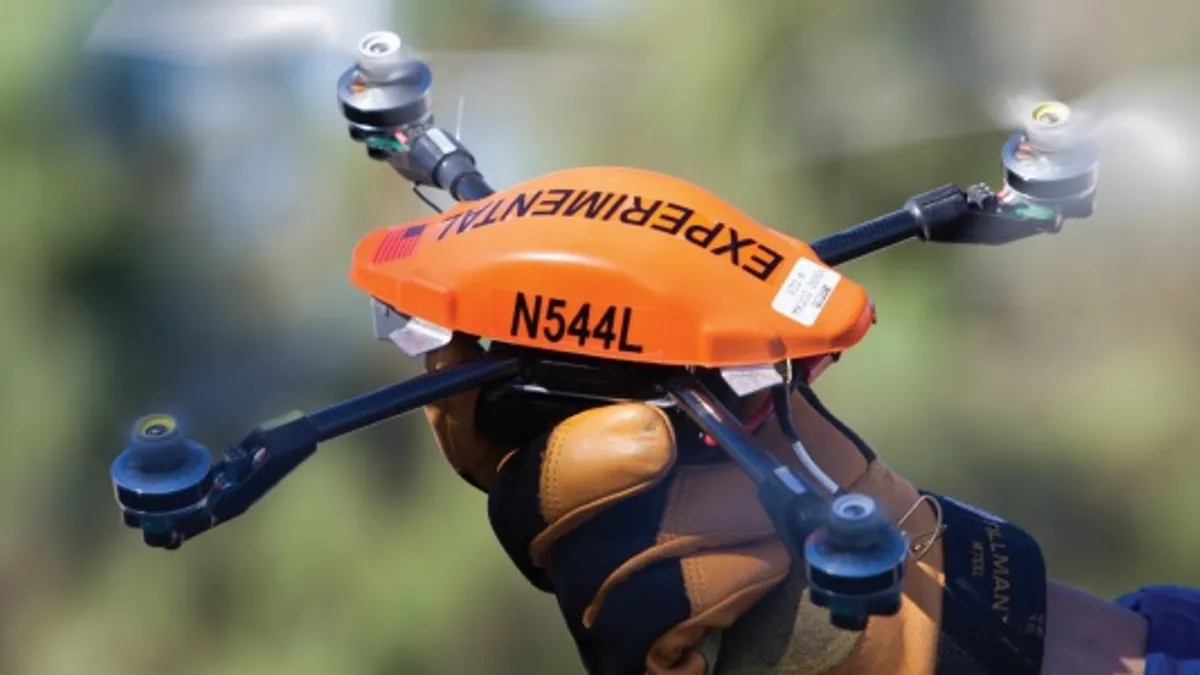Dive Brief:
- The U.S. Federal Aviation Administration has authorized Xcel to fly unmanned aircrafts to inspect thousands of miles of power lines and gas pipeline, though they will only operate at low altitudes and over property owned by the utility.
- Xcel officials told thhe Star Tribune they are still working out just how and where the drones will be utilized, but expect there to be improvements to reliability because of the decision.
- The Obama adminstration this year proposed new rules on how industries may use drones, potentially saving utilities millions of dollars as they avoid costly visual inspections, often performed by helicopter.
Dive Insight:
The federal government is slowly authorizing utilities to operate unmanned aircraft, and earlier this month Xcel joined San Diego Gas & Electric, Commonwealth Edison, and Southern Co. as being among the first to utilize the small crafts for asset survey.
“We believe these measures will increase electricity and gas system reliability, reduce customer costs and improve our emergency response times,” Kent Larson, Xcel Energy’s executive vice president and group president of operations, said in a statement.
Larson said the company’s current plan is to use drones only over utility property or utility rights of way and away from populated areas and airports. The drones will be flown at low altitudes and in the operator’s line of sight.
Xcel is tasked with inspecting more than 320,000 miles of electricity and natural gas infrastructure, and said with the FAA approval to fly drones the job will be much easier and safer. Larson said the company is studying "how this new technology can best be used to enhance employee and public safety at our operations."
The company also said it will use drones to observe environmentally sensitive areas without the use of trucks, helicopters or other utility equipment, to mitigate impact.
The potential savings are significant. Earlier this year SDG&E told Utility Dive that it costs about $1,200 to fly a mile in a helicopter to inspect a power line (and the utility inspects more than 26,000 miles of line). By contrast, a small drone can be purchased for less than $20,000. The aircraft can be outfitted with 3-D imaging technology, thermal scanners and high definition video.















